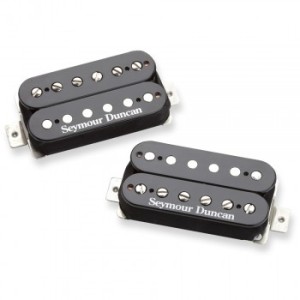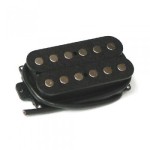Language
A Look At Electric Guitar Pickup Magnets
Magnets found in pickups play an important role in the tone of an electric guitar. Hence, it is essential to know the basics and variations of the guitar pickup in order to better understand your instrument's tone. Guitar pickups consist of wires and magnets. Both of these components work together to produce their signature sound. Each type of the magnet has their own distinctive features which create variations in their sound. To learn more about three popular types of pickup magnets and their effect on tone, read on.
 Click here to check out our entire selection of electric guitar pickups![/caption]
Click here to check out our entire selection of electric guitar pickups![/caption]
A Brief Word On Pickups
A typical pickup features magnets that usually come either in one or six separate pieces that are placed in a bobbin and wrapped with a copper wire. Pickups then pick up the vibrations of strings and turn them into an electrical signal that is sent out of the guitar and into an amp, preamp, effects pedal, etc. As far as the magnets go, there are two main types used in today's pickups, Alnico and Ceramic. Rare-earth magnets are also used, such as Neodymium, but these are not nearly as commonplace as Alnico or ceramic.Alnico Magnets
This type of magnet is made of different materials that include nickel, the alloy of aluminum, cobalt, iron, and some other metals. Alnico magnets are widely used in vintage pickups as they were the predominant type used in the 1950s and 1960s. Alnico magnets come in different grades: Alnico II, III and V. It should be noted that Alnico numbers do not increase in order of magnetic strength, as you might at first suppose (i.e., II being the weakest, III in the middle and V the strongest). On the contrary, the order of magnetic strength goes like this: Alnico III has the weakest magnetic force, alnico II is in the middle and alnico V is the strongest.Ceramic Magnets
Ceramic magnets came into the industry in the 1970s and were created specifically to create higher output pickups. Interestingly enough, ceramic magnets are actually weaker than alnico when they are of the same grade and size – but only after a certain point, though. When it comes to the size of magnets used in pickups, ceramic is actually stronger and therefore brighter. Very bright, in fact. They also retain articulation and clarity even with heavy distortion which makes ceramic suited for heavy distorted styles. It also has the added benefit of being a more affordable alternative to Alnico.Neodymium Magnets
A type of rare-earth magnet, the magnetic force of Neodymium is permanent, unlike the Alnicos and Ceramic. It is also much stronger than the two but also much more expensive for the same amount of material, so manufacturers often use small pieces of this type of magnet in conjunction with Ceramic or Alnico in order to further magnetize them. The advantage of this material is that it offers a strong magnetic base for a given weight of the magnet, meaning you can get more output in a smaller size. This makes them great for use in acoustic guitars where small, discrete yet powerful pickups are ideal. Among the above three, Alnico Magnet and Ceramic Magnet are more popular and widely used by musicians. Neodymium Magnet is relatively expensive and not as widely used in electric guitar pickups. For the restricted budget, ceramic will be an ideal option. It also offers high pickups. And Alnico is perfect for the classical pickups. By knowing exactly how and why a pickup sounds a certain way, you can give yourself a very educated grasp on what to look out for the next time you’re in search for something sonically specific because as any pro guitarist can tell you, there’s nothing quite as satisfying as finally attaining that perfect tone!Your Turn to Sound Off!
What type of magnet do your pickups offer?Let us know in the comment section below!
[caption id="attachment_5223" align="alignleft" width="300"] Click here to check out our entire selection of electric guitar pickups![/caption]
Click here to check out our entire selection of electric guitar pickups![/caption]
